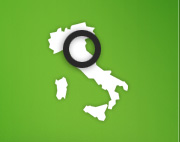History of Bologna
City of science and arts
Students are pretty much everywhere in Bologna. One of the world’s oldest universities attracts learners from all across Italy and many other countries. The city itself can look back of approx. 3,000 years’ worth of history with many rulers coming and going. All of them left their very own mark on Bologna giving the Northern-Italian junction its unique, distinctive flair.
Early developments
Scientists presume that there was already a settlement of the Villanova culture in the area of today’s Bologna in the 10th century BC. The Etruscans founded Felsina approx. 400 years before, after various culture groups (such as the Boii that laid the foundation for the city’s modern name by calling it Boion), the Romans eventually rose to power. Bologna became an important transport nodal point and blossomed due to the construction of Via Emilia. Even a devastating fire couldn’t stop the city’s rise as it was rebuilt during Nero’s reign. The end of the Western Roman Empire lead to many different rulers, such as the Goths, Byzantines and Lombards.
Winner in the Investiture Conflict
It took a long time for Bologna to recover after the fall of the Western Roman Empire. The city, now part of the Papal States, cleverly outmanoeuvred the different parties during the Investiture Conflict and eventually became a free commune in the 11th century. Bologna’s university was founded in 1088 making the city one of the most important places to study in all of Italy. It reached the peak of its power as part of the Lombard League and was one of the ten largest cities in Europe at the end of the 13th century with 50,000 inhabitants, approx. 10,000 of which were students. In order to adapt to the growing population house owners had to obligate themselves to add more storeys to already existing buildings. This led to the construction of the famous porticoes supporting the storeys above them. Around 80 guard towers and dynasty towers, many of which fell victim to the battles of rivalling noble families, were built during this time. Only twelve towers remain today.
Creeping decline and recent past
After shifting influence of various noble families Bologna’s incorporation into the Papal States in the early 16th century stunted industrial growth. At the same time the city’s arts and science blossomed. The university, which had been spread across the entire city to this point, was given the Archiginnasio, its first representative seat. The School of Bologna of painting with Annibale Carracci, Guido Reni und Guercino also gained in importance. One brief Napoleonic intermezzo aside, Bologna remained part of the Papal States until Italy was united, upon which it became the centre of the socialist movement. The train station built in 1876 still is one of the country’s most important transport nodal points. Bologna repeatedly overcame severe tragedies in recent history, such as massive devastations during the Second World War or a terrorist attack on the train station in 1980 costing 85 lives. The city is still characterised by its rich history and its status as one of Europe’s prime places for students – about 80,000 of the 384,000 inhabitants are students.



Tweet